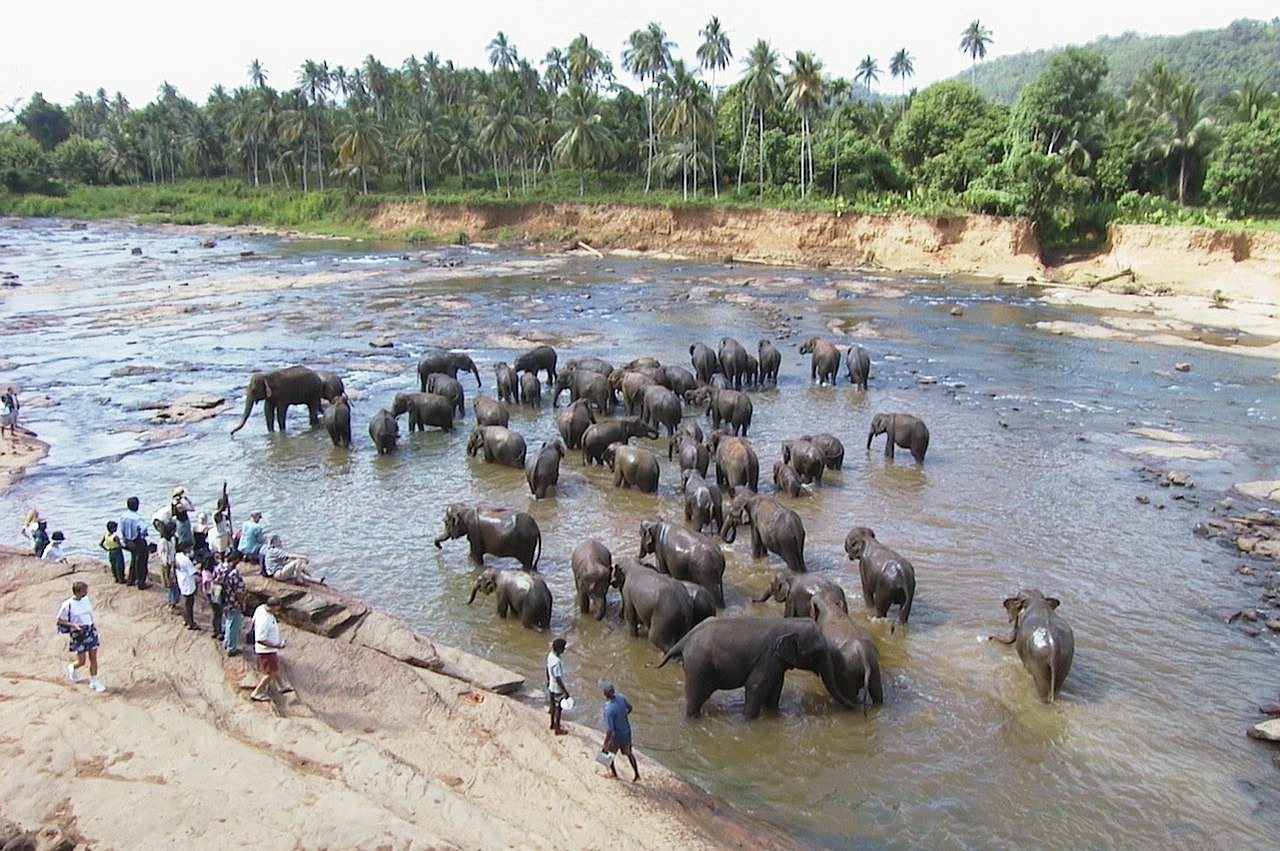Pinnawala Elephant Orphanage, located in the picturesque surroundings of Sri Lanka, is renowned for its commitment to the care and rehabilitation of orphaned and injured elephants. This unique sanctuary provides a safe haven for these magnificent creatures, allowing them to thrive in a natural environment. In this article, we will delve into ten insights about life at Pinnawala, exploring its mission, the challenges faced by the elephants, and the unforgettable experiences it offers to visitors.
A Brief History of Pinnawala Elephant Orphanage
Established in 1975, Pinnawala Elephant Orphanage was created to provide care for abandoned, injured, or orphaned elephants. Initially set up with just a few elephants, the sanctuary has since grown significantly, now housing over 80 elephants. The orphanage’s primary goal is to protect these gentle giants, provide them with a comfortable environment, and educate the public about their needs and conservation.
Pinnawala Elephant Orphanage: The Role of Caregivers
The caregivers, known as “mahouts,” play a crucial role in the daily lives of the elephants. These skilled individuals develop deep bonds with the elephants, ensuring they receive the necessary care and attention. The mahouts are responsible for feeding, bathing, and monitoring the health of the elephants, often forming lifelong relationships with them. This connection is vital for the emotional well-being of the elephants, as they thrive in environments where they feel loved and safe.
Daily Routine at the Sanctuary
Life at Pinnawala is structured around a daily routine that caters to the elephants’ natural behaviors. Each day begins with feeding time, where elephants receive a diet of grass, fruits, and specially formulated elephant pellets. After breakfast, the elephants are led to the nearby river for their daily bath, an activity they enjoy immensely. This ritual not only helps maintain their hygiene but also provides them with social interaction and exercise.
Rehabilitation and Release Efforts
One of the primary goals of Pinnawala is to rehabilitate elephants so they can eventually return to the wild. While many elephants at the sanctuary are too habituated to humans for successful reintegration, efforts are made to educate the public about the challenges of conservation. The orphanage collaborates with various wildlife organizations to monitor and support elephants that show potential for release, ensuring they are well-prepared for life in the wild.
Educational Programs and Conservation Awareness
Pinnawala Elephant Orphanage actively engages in educational programs designed to raise awareness about elephant conservation. Visitors are provided with information on the threats facing elephants, such as habitat loss and poaching. The orphanage also hosts workshops and guided tours, where guests can learn about the elephants’ behaviors, diet, and the importance of protecting their natural habitats. These initiatives foster a greater understanding of the challenges faced by elephants and encourage conservation efforts.
The Importance of Elephant Welfare
Animal welfare is a top priority at Pinnawala. The sanctuary ensures that all elephants are treated with respect and compassion. Regular veterinary check-ups are conducted to monitor their health, and any medical issues are promptly addressed. The elephants are given the freedom to roam, socialize, and engage in natural behaviors, promoting their physical and mental well-being. This commitment to welfare sets Pinnawala apart as a leading sanctuary in elephant conservation.
A Unique Visitor Experience
Visitors to Pinnawala Elephant Orphanage are treated to an unforgettable experience. From witnessing the feeding sessions to observing the elephants’ playful interactions, there are numerous opportunities for engagement. Tourists can even participate in activities such as bathing the elephants in the river, providing a hands-on experience that fosters a deeper connection with these gentle giants. The sanctuary’s picturesque setting, with lush greenery and flowing rivers, enhances the overall experience, making it a popular destination for travelers.
Challenges Faced by the Sanctuary
Despite its successes, Pinnawala Elephant Orphanage faces various challenges. Funding and resources are essential for maintaining the sanctuary and ensuring the elephants receive proper care. Additionally, the orphanage grapples with public perceptions and misconceptions about captivity versus rehabilitation. Striking a balance between providing a safe haven for the elephants and promoting conservation efforts in the wild is an ongoing challenge that the sanctuary navigates.
Community Involvement and Support
Pinnawala Elephant Orphanage relies on community involvement and support to sustain its mission. Local communities are encouraged to participate in conservation efforts, fostering a sense of responsibility towards wildlife. The orphanage collaborates with schools, local businesses, and organizations to promote awareness and generate funds for the sanctuary. By involving the community, Pinnawala aims to create a collective effort towards elephant conservation and welfare.
The Future of Pinnawala Elephant Orphanage
As Pinnawala Elephant Orphanage looks to the future, its commitment to elephant welfare and conservation remains steadfast. The sanctuary plans to expand its educational programs, enhance rehabilitation efforts, and improve facilities for the elephants. By continuing to raise awareness about the challenges facing elephants and engaging the public, Pinnawala aims to inspire future generations to protect these majestic creatures and their habitats.
Conclusion
Pinnawala Elephant Orphanage stands as a beacon of hope for elephants in need. Through dedicated care, educational initiatives, and community involvement, the sanctuary fosters a deeper understanding of these magnificent animals and the importance of conservation. By visiting Pinnawala, guests not only gain insight into the lives of elephants but also contribute to the ongoing efforts to protect and rehabilitate them. As we learn more about the challenges faced by elephants and the work being done to support them, we are reminded of the vital role each of us can play in their conservation.
FAQs
1. Can I volunteer at Pinnawala Elephant Orphanage?
Yes, Pinnawala Elephant Orphanage offers volunteer opportunities for individuals interested in supporting elephant care and conservation efforts. Check their official website for application details.
2. Is it ethical to visit Pinnawala Elephant Orphanage?
Pinnawala Elephant Orphanage prioritizes elephant welfare and education. Visiting helps raise awareness about conservation efforts, but it’s essential to ensure your visit aligns with responsible tourism practices.
3. What is the best time to visit Pinnawala?
The best time to visit Pinnawala is during the dry season, from December to March, when the weather is pleasant, and the elephants are more active.
4. Are there accommodations near the sanctuary?
Yes, there are several hotels and guesthouses near Pinnawala that cater to visitors. Many offer packages that include tours to the orphanage.
5. How can I support Pinnawala Elephant Orphanage?
You can support the sanctuary by visiting, participating in educational programs, making donations, or purchasing souvenirs from their gift shop, with proceeds going towards elephant care and conservation efforts.
Also read: Malaysia and Borneo: 10 Incredible Beaches for Your Next Vacation




Leave a Comment